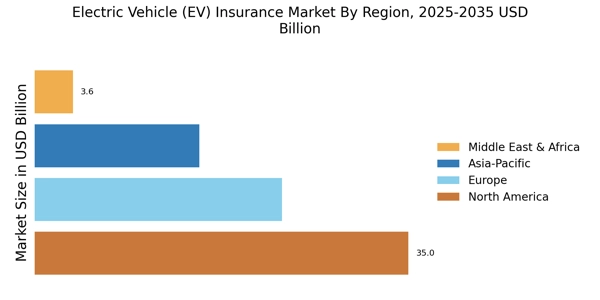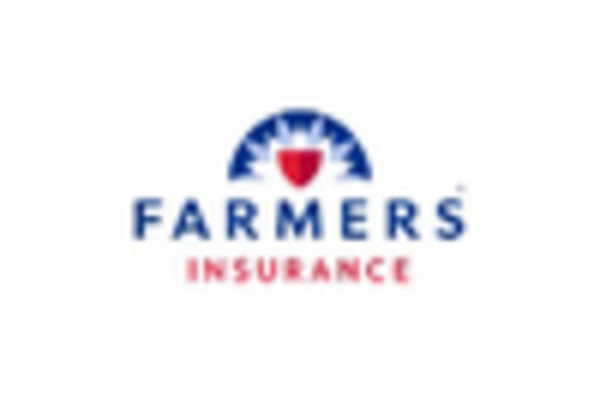Rising Adoption of Electric Vehicles
The increasing adoption of electric vehicles (EVs) is a primary driver for the Electric Vehicle (EV) Insurance Market. As consumers become more environmentally conscious, the demand for EVs has surged, with sales projected to reach over 30 million units annually by 2030. This shift not only reflects a change in consumer preferences but also necessitates tailored insurance products that address the unique risks associated with EV ownership. Insurers are responding by developing specialized policies that cover aspects such as battery replacement and charging infrastructure. Consequently, the growth in EV adoption is likely to propel the Electric Vehicle (EV) Insurance Market, as more vehicles on the road translate to a greater need for comprehensive insurance solutions.
Government Incentives and Regulations
Government incentives and regulations play a crucial role in shaping the Electric Vehicle (EV) Insurance Market. Many countries are implementing policies that encourage the transition to electric mobility, including tax credits, rebates, and grants for EV purchases. These incentives not only lower the initial cost of EVs but also stimulate market growth, leading to an increase in the number of insured electric vehicles. Furthermore, regulations mandating insurance coverage for EVs are becoming more prevalent, ensuring that consumers are protected. As a result, the Electric Vehicle (EV) Insurance Market is likely to expand in response to these supportive governmental measures, fostering a more robust insurance landscape for electric vehicle owners.
Emerging Market Segments and Demographics
Emerging market segments and demographics are reshaping the Electric Vehicle (EV) Insurance Market. Younger consumers, particularly millennials and Gen Z, are more inclined to adopt electric vehicles due to their tech-savvy nature and environmental consciousness. This demographic shift is prompting insurers to tailor their offerings to meet the preferences of these new customers, who may prioritize digital engagement and flexible policy options. Additionally, the rise of ride-sharing and fleet services utilizing EVs is creating new insurance needs that traditional policies may not adequately address. As these market segments continue to grow, the Electric Vehicle (EV) Insurance Market is expected to evolve, providing innovative solutions that cater to the diverse needs of modern consumers.
Growing Awareness of Environmental Impact
The growing awareness of environmental impact is a significant driver for the Electric Vehicle (EV) Insurance Market. As climate change concerns escalate, consumers are increasingly seeking sustainable transportation options, leading to a rise in EV purchases. This shift in consumer behavior is prompting insurers to develop policies that not only cover traditional risks but also promote eco-friendly practices. Insurers may offer discounts for EV owners who engage in sustainable driving habits or utilize renewable energy sources for charging. Consequently, the Electric Vehicle (EV) Insurance Market is likely to see a surge in demand as more individuals recognize the environmental benefits of electric vehicles and seek insurance products that align with their values.
Technological Advancements in Vehicle Safety
Technological advancements in vehicle safety are significantly influencing the Electric Vehicle (EV) Insurance Market. Innovations such as advanced driver-assistance systems (ADAS) and autonomous driving features are becoming standard in many EV models. These technologies not only enhance safety but also reduce the likelihood of accidents, which can lead to lower insurance premiums. Insurers are increasingly incorporating these safety features into their risk assessments, potentially leading to more favorable terms for EV owners. As the market for EVs continues to evolve with these advancements, the Electric Vehicle (EV) Insurance Market is expected to adapt, offering policies that reflect the changing landscape of vehicle safety and risk management.


















Leave a Comment